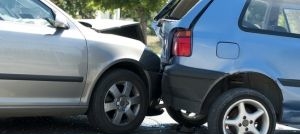What Happens to Your Body in a Rear-End Collision?
Rear-end collisions are the most common type of car accident in the United States, and it’s easy to see why. People are more rushed than ever before and more distracted than they have ever been. They don’t leave enough space between their vehicle and the car in front of them, either to save time or because they don’t want someone to sneak in the gap. At the same time, they’re checking their phones or carrying on conversations with passengers. When someone stops abruptly, they have no chance of stopping in time.
This type of collision varies quite a bit in terms of severity, but if you’ve suffered injuries, you may be entitled to compensation. Call Burns, Cunningham & Mackey at 251-432-0612 to set up a consultation right away.
At the Moment of Impact
People often judge the severity of an accident by the extent of the vehicle’s damage, but that’s not a fair way to assess a crash. The human body can tolerate far less than your vehicle can, so even a crash that causes no vehicular damage can still leave your body aching and injured.
When the car strikes the back of your car, the momentum from the car behind is transferred to your car and your body. The greater the speed of the rear car, the more severe this impact will be.
During the crash, your car will jerk forward violently, as will your body. Your body will keep moving a moment longer than the vehicle, thrusting you against the limits of your seatbelt (hopefully you’re wearing one—otherwise, this experience is even worse). The body snaps back as quickly as it was thrown forward.
This puts an enormous amount of pressure on your spine, neck, and head as they hit your seat. This force doesn’t stop with your bones. It travels into your organs, muscles, and other soft tissue. If the crash happened at a high speed, your organs and other soft tissue may rupture or otherwise suffer severe damage.
How Your Body is Affected
If you are hit from behind, you likely have no chance to prepare for the crash. This means that your body has no time to brace itself for the impact to try to protect its most vulnerable parts.
There is some research indicating that bracing for impact can help in a crash, and most medical experts note that doing so can decrease your risk of severe injuries. While the rear driver does have the chance to brace for impact, you are more likely to absorb the full force of the crash.
Your bones will absorb much of the impact of the crash and protect your vulnerable organs, muscles, and tendons from severe damage. However, they can only do so much. If the crash was especially severe—for example, if the rear driver did not slow down at all prior to the collision—your soft tissue will likely still suffer some damage. In the most extreme cases, organs can rupture and cause internal bleeding. Internal bleeding is fatal and requires immediate medical attention.
Long-Term Impact of a Rear-End Collision
Most people involved in a rear-end crash will make a full recovery, and the majority will do so without any extensive medical intervention. While minor whiplash can be painful and leave you with limited mobility for a short period, it is likely to heal completely without more than rest and time.
Some car accident victims aren’t quite so lucky. They may suffer bone breaks, muscle sprains and tears, or ruptures that lead to internal bleeding. These types of injuries require substantial medical care and a much longer recovery period. This means more medical bills, more time away from work, and more financial instability as a result.
Connect With Burns, Cunningham & Mackey to Explore Your Legal Options
Don’t make the mistake of thinking that a rear-end crash is just a minor crash. There’s still a very real possibility that you have suffered serious injuries. Make it a priority to seek medical treatment, and once you’ve done that, reach out to Burns, Cunningham & Mackey. We fight aggressively for clients like you to give you a shot at fair and full compensation. Contact us online or call us at 251-432-0612 to get started.





Leave a Reply
Want to join the discussion?Feel free to contribute!